
Pool of Radiance is a role-playing video game developed and published by Strategic Simulations, Inc (SSI) in 1988. It was the first adaptation of TSR's Advanced Dungeons & Dragons (AD&D) fantasy role-playing game for home computers, becoming the first episode in a four-part series of D&D computer adventure games. The other games in the "Gold Box" series used the game engine pioneered in Pool of Radiance, as did later D&D titles such as the Neverwinter Nights online game. Pool of Radiance takes place in the Forgotten Realms fantasy setting, with the action centered in and around the port city of Phlan.
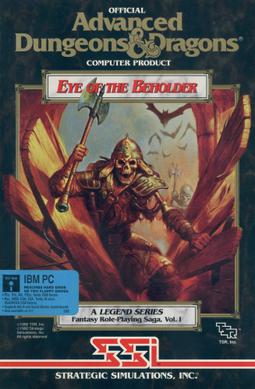
Eye of the Beholder is a role-playing video game for personal computers and video game consoles developed by Westwood Associates. It was published by Strategic Simulations, Inc. in 1991, for the MS-DOS operating system and later ported to the Amiga, the Sega CD and the SNES. The Sega CD version features a soundtrack composed by Yuzo Koshiro and Motohiro Kawashima. A port to the Atari Lynx handheld was developed by NuFX in 1993, but was not released. In 2002, an adaptation of the same name was developed by Pronto Games for the Game Boy Advance.

Curse of the Azure Bonds is a role-playing video game developed and published by Strategic Simulations in 1989. It is the second in a four-part series of Forgotten Realms Advanced Dungeons & Dragons Gold Box games, continuing the events of Pool of Radiance.

Gold Box is a series of role-playing video games produced by Strategic Simulations from 1988 to 1992. The company acquired a license to produce games based on the Advanced Dungeons & Dragons role-playing game from TSR, Inc. These games shared a common game engine that came to be known as the "Gold Box Engine" after the gold-colored boxes in which most games of the series were sold.

Pools of Darkness is a role-playing video game published by Strategic Simulations in 1991. It is the fourth entry in the Pool of Radiance series of Gold Box games, and the story is a continuation of the events of the third game, Secret of the Silver Blades. Like the previous games in the series, it is set in the Forgotten Realms, a campaign setting from Dungeons & Dragons. Players must stop an invasion from an evil god, eventually traveling to other dimensions to confront his lieutenants.
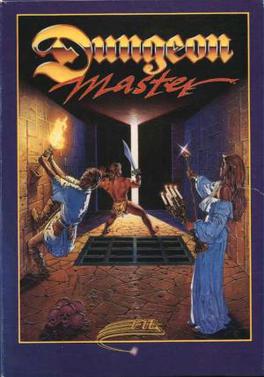
Dungeon Master is a role-playing video game featuring a pseudo-3D first-person perspective. It was developed and published by FTL Games for the Atari ST in 1987, almost identical Amiga and PC (DOS) ports following in 1988 and 1992.
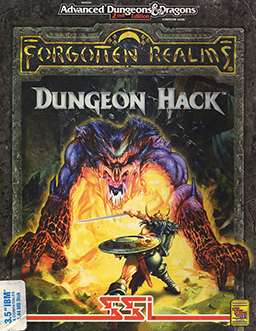
Dungeon Hack is a 1993 role-playing video game developed by DreamForge Intertainment and published by Strategic Simulations for DOS and NEC PC-9801.
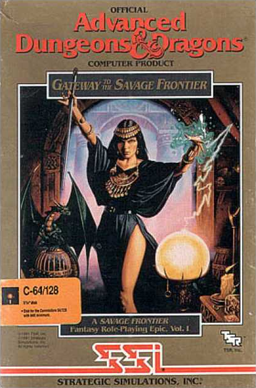
Gateway to the Savage Frontier (1991) is a Gold BoxDungeons & Dragons computer game developed by Beyond Software and published by SSI for the Commodore 64, PC and Amiga personal computers.

Champions of Krynn is role-playing video game, the first in a three-part series of Dragonlance Advanced Dungeons & DragonsGold Box games. It was published in 1990 by Strategic Simulations. The highest graphics setting supported in the MS-DOS version is EGA graphics. It also supports the Adlib sound card and either a mouse or joystick.

The Dark Queen of Krynn is the third in a three-part series of Dragonlance Advanced Dungeons & Dragons "Gold Box" role-playing video games. The game was released in 1992.

Eye of the Beholder II: The Legend of Darkmoon is a 1991 role-playing video game and the sequel to the first Eye of the Beholder. It used a modified version of the first game's engine, added outdoor areas and greatly increased the amount of interaction the player had with their environment, along with substantially more role-playing aspects to the game. A sequel, Eye of the Beholder III: Assault on Myth Drannor, was released in 1993.

Eye of the Beholder III: Assault on Myth Drannor is a 1993 role-playing video game and the sequel to Eye of the Beholder and Eye of the Beholder II: The Legend of Darkmoon.

Dark Sun: Wake of the Ravager is a role-playing video game developed and published by Strategic Simulations in 1994 for the MS-DOS operating system. It is the sequel to Dark Sun: Shattered Lands.

Al-Qadim: The Genie's Curse is an action role-playing game for the personal computer set in the Al-Qadim campaign setting of Advanced Dungeons and Dragons. The game was developed by Cyberlore Studios and published in 1994 by Strategic Simulations (SSI). The game combines role-playing game and adventure with a simplified interface; the player character is a young corsair trying to clear his family's name, rescue his betrothed and determine who has been freeing genies from their masters.
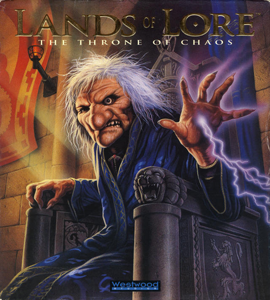
Lands of Lore: The Throne of Chaos is a 1993 role-playing video game developed by Westwood Studios and published by Virgin Games for MS-DOS, the NEC PC-9801, and FM Towns. It was the first installment of the Lands of Lore series. The player travels around various environments, collecting items and battling monsters in an attempt to save the kingdom from a witch named Scotia, who has acquired shape-shifting abilities.

Dark Sun Online: Crimson Sands was an early massively multiplayer online role-playing game (MMORPG) that was developed and published by Strategic Simulations, Inc. in 1996 for Windows 95. Dark Sun Online was based on the licensed Dark Sun campaign setting for the Advanced Dungeons & Dragons tabletop role-playing game. It was one of the first fully graphical MMORPGs.

Menzoberranzan is a 1994 role-playing video game created by Strategic Simulations (SSI) and DreamForge Intertainment. Menzoberranzan uses the game engine that was used previously in SSI's Ravenloft: Strahd's Possession (1994), and is set in the Advanced Dungeons & Dragons Forgotten Realms campaign setting.
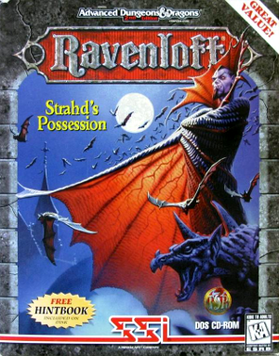
Ravenloft: Strahd's Possession is a 1994 fantasy role-playing video game developed by DreamForge Intertainment for Strategic Simulations for DOS. Ravenloft: Stone Prophet is a sequel to this game.

Ravenloft: Stone Prophet is a fantasy role-playing video game developed by DreamForge Intertainment for MS-DOS and published by Strategic Simulations in 1995.
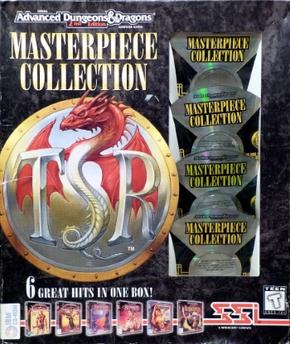
The AD&D Masterpiece Collection is a collection of role-playing games for MS-DOS, produced by Mindscape/SSI in 1996.



















